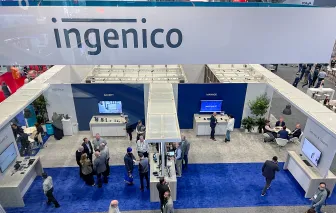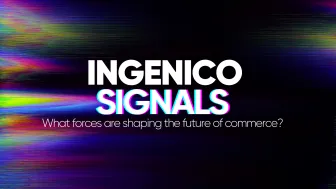How can ecosystems in payment technology surface the power and value found in the use of APIs to enrich the merchant offer and customer experience? From enabling alternative payment systems driven by QR codes to digital receipting that reduces environmental waste, joined up services driven by APIs are everywhere.
Many would agree that connecting and collaborating together has great power, but mostly we are referring to the ‘people’ dimension. The value we get from talking, exchanging ideas and working with others to solve problems. But in reality, it’s not just humans for whom this is important, for technology and machines it can be equally so. In fact, in years to come you could argue the balance will switch as artificial intelligence takes root, deeper machine learning matures, and the interconnected fabric of our technology landscape accelerates with users expecting an increasingly integrated experience.
The principle of joining two systems is a simple concept on the surface but one not so easy to achieve in reality. Which is why the API (Application Programming Interface) has quietly become a crucial component in the technological jigsaw. It’s the unseen person at the party, quietly connecting the guests and smoothing the flow of discourse. With 100% growth between 2019 and 2020 and now over 46 million APIs stored through Postman Collections, one of the main API platforms, the rise has been formidable.
APIs as a Common Currency
In practice, the many points of integration now in play have brought about a tapestry of richer, more dynamic technology ecosystems. Think of the numerous points of connection such as single sign on, data sharing enabled through Open Banking and, in the case of payments, the connections between terminals and retail point of sale solutions. Everywhere you look there will be an API, working quietly in the background to make our world simpler, richer and better.
Better, Smarter, Faster
System integration has always been an important factor in developing and extending technology but it has largely been based on a variety of bespoke connections, middleware or local APIs. In recent years however, there has been a step change in how APIs have been engineered. In particular the use of text based protocols such as RESTful JSON, have helped greatly simplify the process of connecting or consuming services independent of the underlying programming language or platform used.
So the term API has become common currency as organisations and solution providers seek out new ways to be more effective and offer better solutions and services through participation in wider ecosystems. Calls for ‘Do you have an API? ‘or ‘How do we connect?’ have grown in use and volume, increasing the investment in making things simpler and easier to hook up in the first place.
Improvements in standards, tooling, and documentation have transformed integration tasks that took weeks and considerable manpower into ones that need only days and light touch development to complete. This has led to a proliferation of available APIs, enabling developers to connect to more things and more services. Even the rise of businesses wholly built around APIs; take Uber and its use of messaging services from Twilio and map services from Google. In fact, close to half of the 13,500 respondents of the Postman 2020 State of the API Report stated that the investment of time and resources into APIs will increase over the next 12 months.
APIs at Ingenico
For Ingenico, our approach to APIs has been a catalyst for delivering exciting new use cases. Our experience confirms the view that APIs have become the nucleus of digital transformation; for those working on digital transformation projects, 84.5% state that APIs are playing a significant role in their initiatives.
This transformation is critical and brings real value to the services we offer our customers. Take the example of an in-store digital checkout and how APIs have been used to enrich and simplify this experience for both consumers and merchants:
Before The Transaction – creating the basket, scanning bar codes with the payment terminal and simultaneously displaying the basket without the need for a separate third screen
During The Transaction – selecting the payment method (contact, contactless, card scheme, QR code, etc)
After The Transaction – completing the transaction and sharing final data with the POS solution to trigger a digital receipt
All this is achieved by equipping third party developers with the means to connect to the terminal through publicly exposed APIs without having to fully understand all the complexities of the payments ecosystem or how a payment terminal functions. Abstracting the complexity and providing developers with ready access to tooling and a knowledge base has substantially helped to reduce the friction that was a feature in the past.
For example, integrating payments between the POS and the terminal was a task that used to take weeks and is now completed over the course of an afternoon. Even better, Ingenico’s new AXIUM Android range of terminals comes with these Global APIs embedded and ready to go, which means that if you complete the integration with any one of the terminals, then the rest are ready to play as well.
The Future is Most Definitely Bright (& Joined Up)
Ingenico’s payment terminal transformation to a Payment Platform as a Service (PPaaS) provider has pushed this API approach even further. Every service developed is designed to be consumed through a web front end or via an API. This will enable our customers to back their offer with our platform and make integration much faster in areas such as provisioning and account creation, activation, addition or withdrawal of services, as well as improving access for our customers to back office services such as estate management.
A great but simple example is a recent proof of concept where we helped a major loyalty programme improve a pain point they had been experiencing with a new cashback offer. Their challenge was that transaction data was being received several days after the event, creating a disconnect in the customer experience. Now with the help of a simple API, the data is provided in real time and the service will be rolled out as intended later this year.
For the payment industry, the use of APIs is becoming the norm. Merchants expect the data to flow seamlessly to support their payment processing, accounting, inventory management, market intelligence and fraud management. With APIs, we open new horizons and opportunities and create space for further innovative user experiences right through the value chain. Without these clever little connectors, our world would be a lot less interesting and significantly less connected.
If you have any questions or want to know more, you can contact Simon Fairbairn or Myriam Hebron, our Solution Marketing specialist for Global APIs. If you want to know more about Payment Platforms as a Service, follow the link to https://www.ppaas.com/











